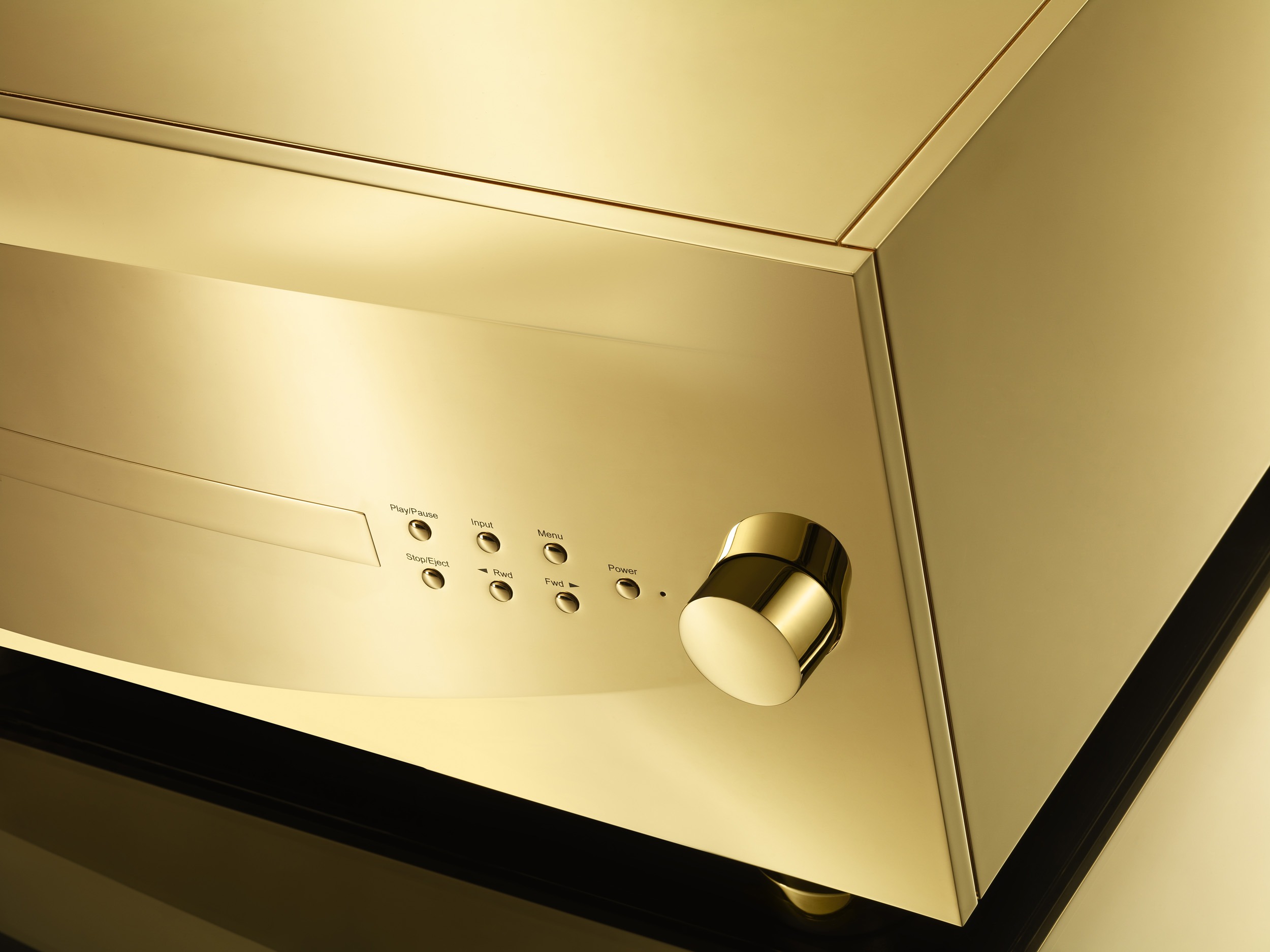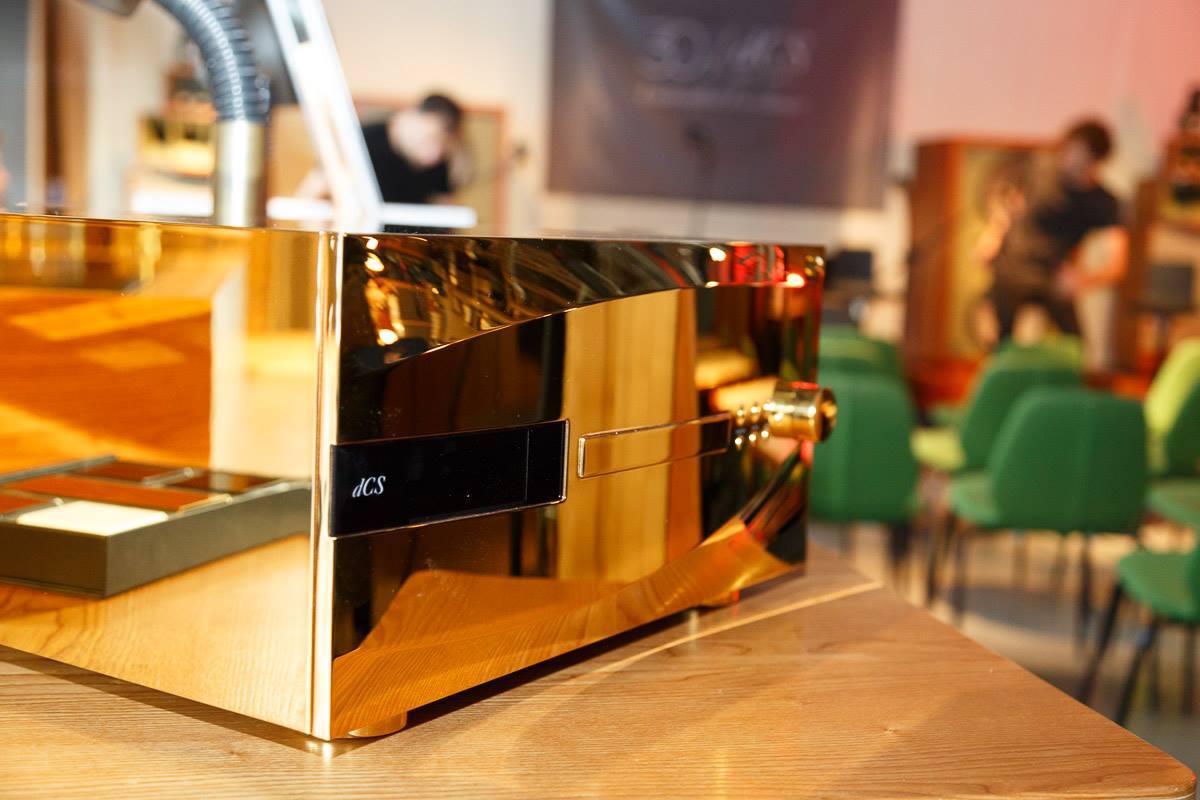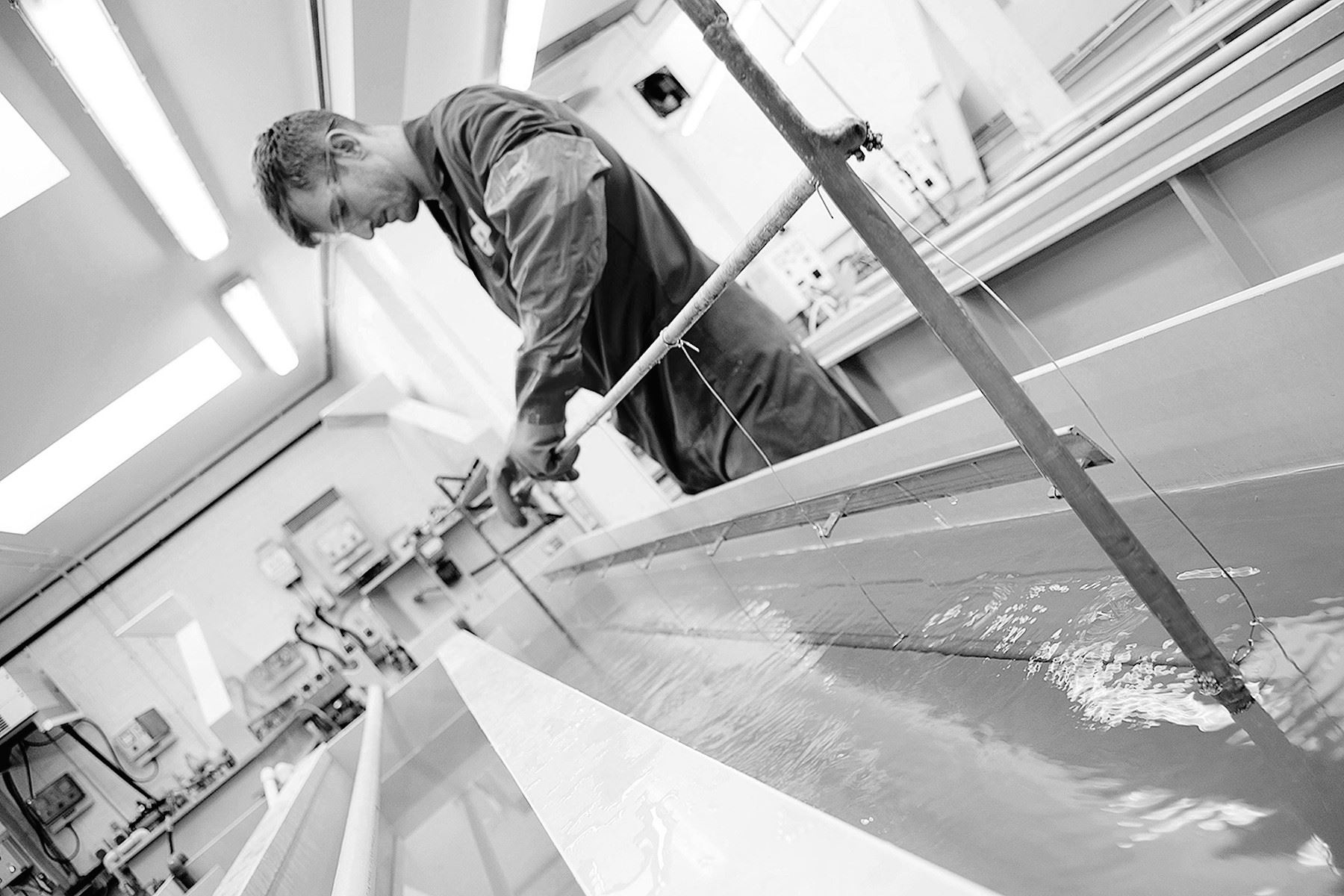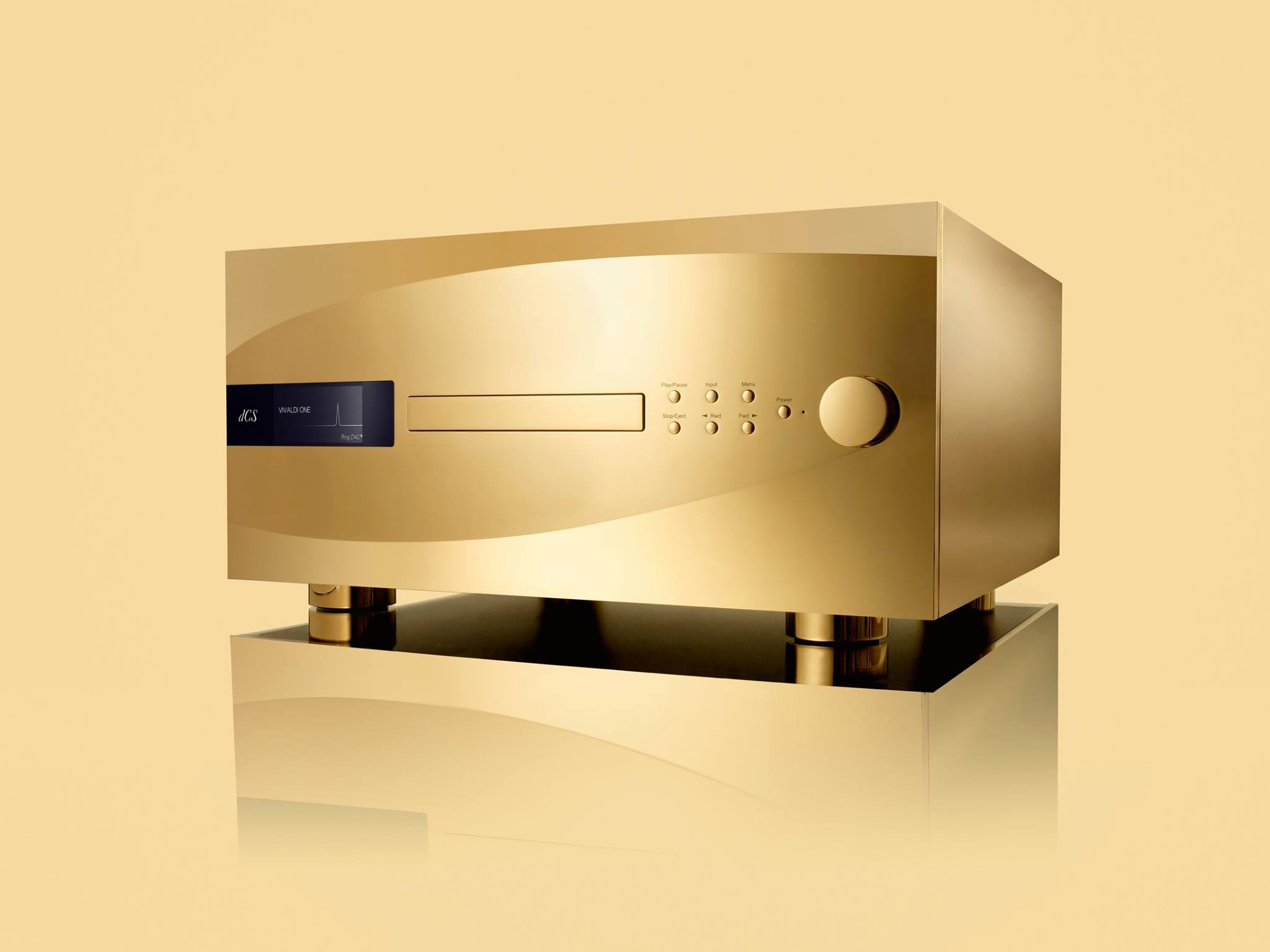Going for Gold
In the first of a four-part feature on the gold-plated dCS Vivaldi One, we meet FH Lambert, specialist electroplater…
Tags: Design & Craft,“We have done a few components for other hi-fi companies, but out of all of them this is surely the most demanding – probably the most demanding that we have ever done.” So says Jamie Lambert, managing director of FH Lambert Ltd., one of the UK’s most esteemed metal plating specialists. He’s referring of course to the striking gold finish option on the new dCS Vivaldi One – the limited edition flagship one-box dCS digital disc player, streamer and DAC. Designed to celebrate the company’s illustrious thirty year history – it had to be extra special, and gold is just that. “It’s because of the large surface area that we have to plate – it’s extremely difficult to ensure we get it to a very high standard…”
Jamie recounts the first contact with dCS: “To be honest with you, I can’t even remember how they got our name, how they first found out about us. But they came over and inspected our facilities; a few guys from dCS including designer Ray Wing. And so we went through the fundamentals of how we do parts – how we jig, how we measure, surface areas, everything – and I think it ticked all the boxes on their part. It was almost like we were reassuring them that we approach this accurately. I kept saying that it’s all very well but at the end of the day I can sit here and sell the company and do whatever, but the proof is in the pudding. So we did the first one, and they couldn’t believe how good it came out. They thought that they were going to have problems with the plating, but they didn’t.”
FH Lambert is a family-run business, second generation now, based in Watford. “Basically, the company started in 1963, primarily to design and manufacture watches and jewellery”, explains Jamie. “My father Frank Henry Lambert’s initials gave the company its name. Then, around 1986 the company took the decision to diversify solely into the electroplating market. The reason for that was the market dropped for watch and jewellery manufacturing in the UK and Europe because the Far East became very cheap to manufacture things, especially China. Obviously everything got moved over there, but we still kept the electroplating side of the business. We only had very, very small plating tanks to plate watches. That’s how it started, but then we ventured into the aerospace sector…”
This was a turning point for the company. “We began to get calls from very high end clients, wanting us to start plating private aircraft. I took over from my father fifteen years ago; at that time we had around six people, but we’ve now grown to thirty-one. Demand for decorative precious metal plating has soared, and we now do metal plating, finishing and surface coating. Metal plating obviously consists of dCS-style gold, along with silver plating, chrome plating, nickel plating, copper plating. Metal finishing includes polishing to get to a mirror finish, and then we offer surface coating on top of our metal plating where we clearcoat as well, in different varieties of lacquer. It is mainly small-to-medium volume, we don’t do high levels of production because we have exclusive clients such as dCS.”
Jamie cannot mention many of his other clients due to non-disclosure agreements, but suffice to say it is mainly for airlines, and tends to be the super first-class suites of the world’s top airlines, and also for royal families. “We also do quite a bit with the super-yacht marine industry as well. It is quality over quantity,” he says. “That’s it in a nutshell. A lot of people can do plating, but we work for a very, very demanding clientele – and dCS is a perfect example!”

Going for Gold – Part 2
In the second of a four-part feature on the gold-plated dCS Vivaldi One, we look at how it receives its immaculate finish…
FH Lambert is the specialist electroplating company that does the sublime gold finish on the limited edition Vivaldi One. dCS chose them for the quality of the company’s work, which is done in low volumes and to aerospace standards. Managing Director Jamie Lambert explains that, “we are basically an aerospace company, what you would call an AS1900 company. That itself is a quality management system or framework built around the aerospace sector. In terms of our aesthetic, visual inspections, it is set at every process, every process step. It’s not a case of completing the work and then finding there’s an issue with it – the way we do it, every step of the way there is an intermediate inspection that it has to pass.”
Like cooking, it’s all in the preparation, says Jamie. “You have got to make sure that is all right and that isn’t easy, and it is a very skilled job. It’s something that we do and we train people here to do. You’ve got to have Obsessive Compulsive Disorder (OCD) – and fortunately many people who work here do! It’s about understanding that quality makes our business. We are a tier two business; there are manufacturers like dCS and wider supply chains that sit above us. You could say, as a plating plant, ours is one of the cleanest you’d ever come across. We want to set a professional image about ourselves because we do get audited regularly by our customers. We get this all the time…”
When a dCS Vivaldi One part arrives at FH Lambert, it comes in a specially designed box which is padded to protect the component. “Then, they’re all unwrapped and accounted for”, says Jamie. “We book them all in on our system and everything is fully traceable. The part is not just received and plated, we have to build it as specified. The steps and sequence are all on the actual job card. We engrave a unique identification number on to the part, the reason for this being traceability. This is a huge thing in aerospace. Every step of the way we can always find where it is on the shop floor. Even if it goes back to the customer and, let’s say something happens later on, we can ask the customer to read back the identification number on the part (obviously we engrave it in an inconspicuous area which is not seen by the customer) and can pull out from our system when it was done, who it was done by, where did it go in the process. Effectively this means we can rebuild this part at a later date, in the exact same way as we did before.”
After this, the part is linished. “This basically when it is sanded, and the reason for this is to remove any machine tramlines or marks. Then it is polished on a spindle mop to a very high mirror finish. Once it passes inspection it is now jigged, then you clean the part and go through various etchers and cleaners. Then it is nickel plated – the nickel having been laid down on the surface it is then copper plated. The reason for this is copper is a very soft metal which you can polish very easily. Then it’s nickelled again and finally gold plated. Obviously, between these layers there is an inspection. Once it is gold plated it’s got to go through a final inspection and then it is wrapped in a special material that we use here which prevents scratching. Then they are inserted back into their boxes and returned to the customer – in this case dCS. So the Vivaldi One isn’t just dipped in gold, if you know what I mean!”

Going for Gold – Part 3
In the third of a four-part feature on the gold-plated dCS Vivaldi One, we look how a perfect finish is obtained.
There is more to getting an immaculate gold finish that just dipping something in gold, says Jamie Lambert, managing director of FH Lambert Ltd. – one of the UK’s most esteemed metal plating specialists. “What ultimately counts is the nickel”, he explains. “Take for example, a beautifully chrome plated car bumper. Most people think that lovely finish that you get is produced by the chrome, but it isn’t. What gives you that mirror-like, highly reflective finish is actually the nickel. Nickel is the key element in most decorative finishing. Chrome is simply put on top of the nickel to seal it, because nickel tarnishes over time, it goes yellow. Think of an American quarter, the coin. Over time they start to yellow off. So, chrome is applied on top to keep it from tarnishing. In the case of the gold-plated parts for the dCS Vivaldi One, we are putting gold on instead, to get a beautiful colour.”
Each dCS part is polished, etched, cleaned and then nickel plated. Then it gets copper plating before the final nickel layer for a deep mirror shine, and then gold. The reason for the copper before this, says Jamie, is to seal the aluminium. The gold at the end seals the nickel, protecting it with the atmosphere. “Gold is perfect for this,” he adds, “because it’s one of the most unreactive elements around. It really is very, very good. It isn’t just used for decorative applications – because it’s a very good conductor of electricity, and a good heat reflector as well. NASA use it on a lot of their satellites for insulation and various spacecraft because it reflects heat very well, it reflects light very well. It is a very good element in so many ways. These characteristics are why it has such allure for so many people, I think…”
Silver tarnishes with the sulphur in the atmosphere, of course, as does copper. Nickel doesn’t tarnish as much but does “yellow off”. Chrome and gold are the best for longevity. “There is a kind of natural selection in materials,” he says. “Automotive loves chrome and jewellery sees gold as one of the great materials – surely because it is beauty and longevity, which is a rare combination.”
The lucky owner of a gold-plated dCS Vivaldi One will not need to clean his or her machine. Gold, done to the standard that FH Lambert delivers, only needs very light dusting – not polishing. “Ultimately, the only problem with gold is that it scratches quite easily, so handling is paramount. dCS includes soft cotton gloves with each piece, so it should be installed wearing these. After that, it only needs the occasional wipe with a microfibre suede cloth to lightly dust the surface down. Microfibre suede is better than the standard non-suede variety because there is no pattern in the manufacturing process. Sometimes, under pressure, these patterns can scratch any material – it doesn’t have to be gold. Suede however, because it doesn’t have a pattern to it, is very silky and practically slides over the surface. Every type of cleaning cloth abrades ever so slightly, but suede micro fibre abrades in a random way and doesn’t leave swirls or marks like conventional cloths.”
Finally, says Jamie, “one of the most critical things is that you store the cleaning cloth away in its container – because if you put it down on any type of surface it can pick up what in aerospace jargon we call “FODS”, fine object debris. To you and me this is called “dirt”. Once that is impregnated or locked onto the cloth, when you then come to wipe the part, you are then pushing that debris against the surface. So, handle with care!

Going for Gold – Part 4
In the last of our four-part feature on the gold-plated dCS Vivaldi One, we look at aftercare and quality.
Those fortunate enough to invest in a gold-plated, thirtieth anniversary Vivaldi One have the ultimate dCS product in the most unique and bespoke finish. It does need just a little more care and maintenance than the standard version, says Jamie Lambert, managing director of FH Lambert Ltd. Gold is a beautiful finish, and as a metal is ultra stable so doesn’t tarnish with the atmosphere. However, because it is relatively soft one does need to take care handling it. As we have heard, Jamie recommends moving the product wearing soft cotton gloves, and dusting it infrequently with a suede microfibre cloth. This done, no more attention is needed – but if the worst happens and the machine gets damaged, there is no need to panic…
“If the owner of the Vivaldi One damages a panel, then dCS will be able to order a like-for-like replacement from us, done in exactly the same shade of gold in exactly the same way”, says Jamie. “When I say exactly, I mean exactly. Every process is logged and repeatable. For example, we’ve riveted a plate one year and riveted another one a year later, and the colour is guaranteed and the process guaranteed. We can do this because it’s built into our system – we guarantee the colour and consistency because we use photo spectrometry here. We have machines which measure the lightness and darkness and the colour. This is serious stuff – even many of our suppliers from whom we source the solutions and the metals cannot believe that we take such trouble.”
Jamie says he feels the same way about dCS. “Fantastic! They were kind enough to show me around their facility. What blew me away was just their culture, the passion that they all had, their staff had. It is very similar to my staff I have here. There’s great passion, positivity and drive – they all really believe in what they are doing, like it is part of them. What really did it for me was right at the end, they took me in to their demonstration room. They had asked me to bring some music, and we plugged it in and I just sat there on the sofa whilst they played it, and it is phenomenal. I really enjoy my music – I play piano and I love it.”
“The great thing about our involvement with dCS is that everyday we do products that I or my staff never get to appreciate”, he adds. “When they’re all put together, we never get to appreciate them in the field, so to speak. Yet here we’ve been able to see the end product complete, as a working entity – and the gold Vivaldi One is a thing of beauty. It is nice to see that, and it is very much appreciated. What I am going to be doing soon, when I’ve got some time, is to bring some of my staff who work on the parts up to dCS, so they can get a sense of where their work is ending up. It will be great fun for us all and makes everyone feel special – and rightly so.”
Jamie says the desire for special finishes is growing ever stronger. “These days, because we live in such a commercial society where everything is mass produced, I think people like these special one-off type objects. Also, the story behind it, of how it gets to where it is, is actually really important. In our business with the ultra-luxury end of commercial aviation, that’s what people love.” To that, he can add another object of beauty – surely the finest single-box digital music source yet made – the limited edition dCS Vivaldi One.













